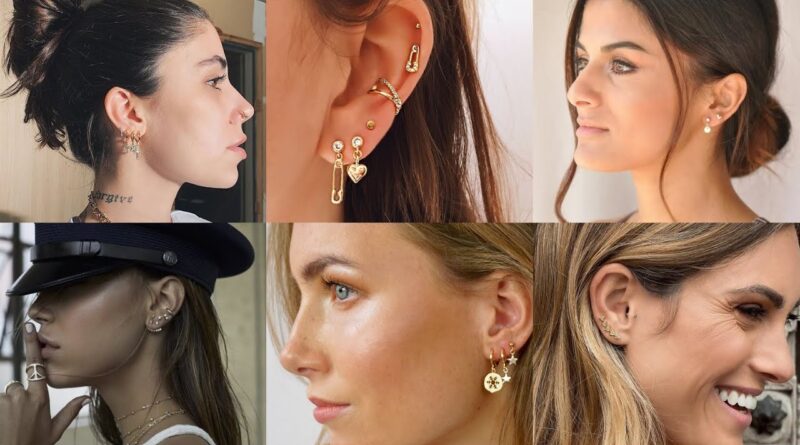What’s a Good First Piercing?
Getting your first piercing is an exciting step into the world of body modification. Whether you’re a teenager eager to express your individuality or an adult looking to change up your style, choosing the right first piercing is crucial. This decision can impact your overall experience, including pain levels, healing time, and how the piercing fits with your lifestyle. In this guide, we’ll explore some of the best options for a first piercing, considerations to keep in mind, and what to expect during the process. We’ll also highlight some tips from Piercing Studio professionals to help you make an informed choice.
Ears: The Classic Starting Point
Earlobe Piercing
The earlobe piercing is the most common and recommended first piercing. It’s a classic choice for several reasons:
- Minimal Pain: The earlobe is fleshy and has fewer nerve endings than other parts of the ear, making the piercing process relatively painless.
- Quick Healing: Earlobe piercings typically heal within 6 to 8 weeks, making it one of the fastest-healing piercings.
- Versatility: Once healed, earlobe piercings can accommodate a wide variety of jewelry, from studs to hoops to dangly earrings.
Helix Piercing
For those looking for something a bit more unique than the standard earlobe piercing, the helix piercing is a fantastic option. This piercing is located on the upper cartilage of the ear and offers a subtle yet stylish look.
- Moderate Pain: The helix has more cartilage than the earlobe, which means it can be a bit more painful. However, the pain is generally manageable.
- Longer Healing: Helix piercings take longer to heal, usually between 6 months to a year. It’s essential to follow aftercare instructions carefully to avoid complications.
Nose: A Stylish Choice
Nostril Piercing
Nostril piercings are a popular choice for first facial piercings. They offer a range of styles and can be very flattering.
- Moderate Pain: The pain level for a nostril piercing is moderate, similar to a helix piercing. It’s a quick procedure, and the pain is usually brief.
- Healing Time: Nostril piercings typically take about 2 to 4 months to heal. Consistent aftercare is crucial to prevent infection and ensure smooth healing.
- Jewelry Options: From simple studs to decorative hoops, nostril piercings offer a wide range of jewelry choices.
Belly Button: A Fun Option
Navel Piercing
For those looking for a piercing that’s a bit different and easily hide able, the navel piercing is a great option.
- Moderate Pain: The pain level for a naval piercing is moderate and varies depending on individual pain tolerance.
- Healing Time: Navel piercings take longer to heal, often between 6 months to a year. Due to the location, it’s essential to avoid irritation from clothing and follow aftercare instructions.
- Fashion Statement: Navel piercings can be a fun way to accessorize, especially during the summer when you might wear crop tops or bikinis.
Important Considerations
Choosing the Right Piercing Studio
Selecting a reputable piercing studio is one of the most important steps in ensuring a positive piercing experience. Here are a few tips from Piercing Studio experts:
- Hygiene Standards: Make sure the studio follows strict hygiene protocols. This includes using sterilized equipment and maintaining a clean environment.
- Experienced Piercers: Look for a studio with experienced piercers who have good reviews and can answer any questions you might have.
- Consultation: A good Piercing Studio will offer a consultation before the piercing to discuss placement, jewelry options, and aftercare.
Pain Tolerance
Everyone’s pain tolerance is different. If you’re particularly sensitive to pain, starting with a less painful piercing like the earlobe might be the best option. It’s also helpful to talk to your piercer about any concerns you have regarding pain.
Aftercare Commitment
Proper aftercare is crucial for the healing process. Regardless of which piercing you choose, following the aftercare instructions provided by your piercer will help prevent infections and ensure your piercing heals properly. This typically involves cleaning the piercing with a saline solution, avoiding touching or twisting the jewelry, and being mindful of any signs of infection.
What to Expect During the Piercing Process
- Consultation: Your piercer will discuss the piercing process with you, answer any questions, and help you choose the appropriate jewelry.
- Preparation: The area to be pierced will be cleaned and marked to ensure accurate placement.
- Piercing: The piercer will quickly and precisely perform the piercing using a sterilized needle. The pain is usually brief and sharp.
- Aftercare Instructions: After the piercing is complete, your piercer will provide detailed aftercare instructions and answer any additional questions.
Final Thoughts
Choosing your first piercing is an exciting decision and a form of self-expression. Whether you opt for a classic earlobe piercing, a stylish helix, a trendy nostril piercing, or a fun navel piercing, each option uniquely enhances your personal style. Remember to choose a reputable Piercing Studio, consider your pain tolerance, and commit to proper aftercare to ensure a positive experience.
Piercing Studio professionals recommend starting with a piercing that aligns with your lifestyle and comfort level. Be bold, ask questions, and take your time to decide. Your first piercing is a memorable milestone, and with the proper preparation and care, it can be a positive and enjoyable experience.
So go ahead, take the plunge, and enjoy your new piercing!



